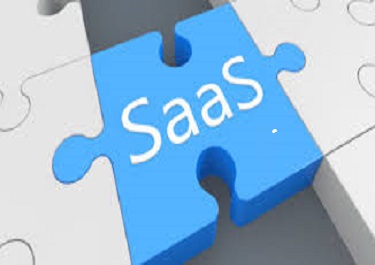 While security and new technologies have gotten a lot of the press over the past few years, many MSPs have undertaken a somewhat silent transformation. In the latest CompTIA survey, 74% of the respondents said some or all their cloud sales revenue came from SaaS-related activities. Considering how infrequently MSPs discuss these solutions, the findings from our Why Software as a Service? Benefits & Advantages of SAAS report are somewhat surprising.
While security and new technologies have gotten a lot of the press over the past few years, many MSPs have undertaken a somewhat silent transformation. In the latest CompTIA survey, 74% of the respondents said some or all their cloud sales revenue came from SaaS-related activities. Considering how infrequently MSPs discuss these solutions, the findings from our Why Software as a Service? Benefits & Advantages of SAAS report are somewhat surprising.
Many providers began offering these solutions to fill gaps in their portfolios or to enhance a specific vertical play. Then they pivoted ‒ a number now lead off their sales conversations with SaaS. The benefits to channel organizations are countless, including new recurring revenue streams, faster deployment options, and an inroad to the vertical markets that many MSPs crave.
Flexibility is a major advantage for the channel. In many respects, SaaS is that “plug and play” solution that reduces their installation time and costs, which benefits MSPs as well as the businesses they serve. Many of these virtual applications are also customizable. That allows providers to offer higher margin value-added services such as customization and integration ‒ activities that often strengthen the customer-provider relationship.
Another advantage of SaaS is it can fit the needs of most any business, from the SMB to the Fortune 500. This versatility factor contributes to the high channel adoption rate and strong customer demand. Consider that Gartner predicts SaaS sales will increase 20.1% in 2017, pushing the market segment to an astounding $46.3 billion. That presents a tremendous opportunity for the MSP community.
Build Market Expertise
Many providers are leveraging SaaS to differentiate their managed services businesses and build out higher-margin specialty practices. Suppliers help by offering technical and market-specific resources and training that reduces barriers to entry for providers. Minimal investment requirements ease the financial risks and other burdens for MSPs, although there remains some debate over the best economic models.
Among other perks? Two-thirds (62%) of the respondents in our survey say offering SaaS solutions has opened doors into new vertical markets.
These solutions allow MSPs to improve margins in other parts of their businesses, too. They can leverage suppliers’ technical expertise and support services to manage low profit activities, letting them focus on more lucrative business opportunities such as consulting, compliance and security assessments.
What’s Driving this Transformation?
Another major driver behind the channel’s shift with SaaS is business adoption. Organizations and end users continue to increase their comfort level with cloud-based solutions. In fact, channel respondents cited customer demand as the No. 1 factor behind their decision to enter the SaaS space.
And its ease of implementation often brings MSPs in after the fact. Many business owners experiment and attempt to self-provision SaaS solutions before realizing they need help with customization, integration, security and other post-sale services. In other words, they may not think they need channel support at first, then come to realize the value providers bring to the table when their projects get bogged down or fail.
That’s another reason why SaaS is now an MSP standard. Channel firms that don’t offer these solutions and all their related support services risk losing customers and revenue streams to the competition or even to their clients’ in-house tech teams. The low cost of entry, ease of implementation, and growing list of suppliers give businesses many options to choose from. And if their MSP can’t support their vision or fails to see the value of SaaS, those companies may look elsewhere or try handling it themselves.
SaaS is a viable and strategic opportunity for MSPs looking to extend their customer relationships. The concern for channel firms is timing. Those not currently offering or actively pursuing SaaS options for their portfolios are in the minority, meaning their competition may be ahead in the game.
Carolyn April is Senior Director of Industry Analysis at CompTIA

